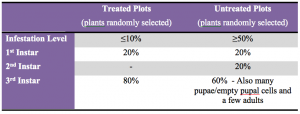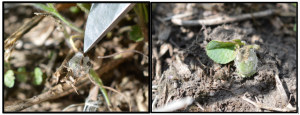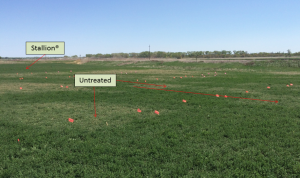—Dr. Jeff Whitworth – Dr. Holly Schwarting – J.R. Ewing and Salehe Abbar
Alfalfa weevil feeding is winding down in north central Kansas, but not as fast as usual. If treatment is still considered prior to swathing do not forget to read the label and follow the PHI (post-harvest interval) required by the product you choose. The untreated control plots in our insecticide efficacy trials are still above our treatment threshold of 1 larva/2 stems, or 50% infestation, and contain many small larvae. Remember, larvae were 1st detected on 13 March so they have been actively feeding for six weeks. However, the good news is many insecticides are still providing excellent protection from one application three weeks ago. See below:
Aphids continue to increase in alfalfa fields. They are primarily pea aphids with a few spotted aphids. Have not seen or heard of any at, or even close to, treatment thresholds, but populations are increasing. Lady beetle and parasitic wasp populations seem to be rebounding which should help slow down these aphid populations.


